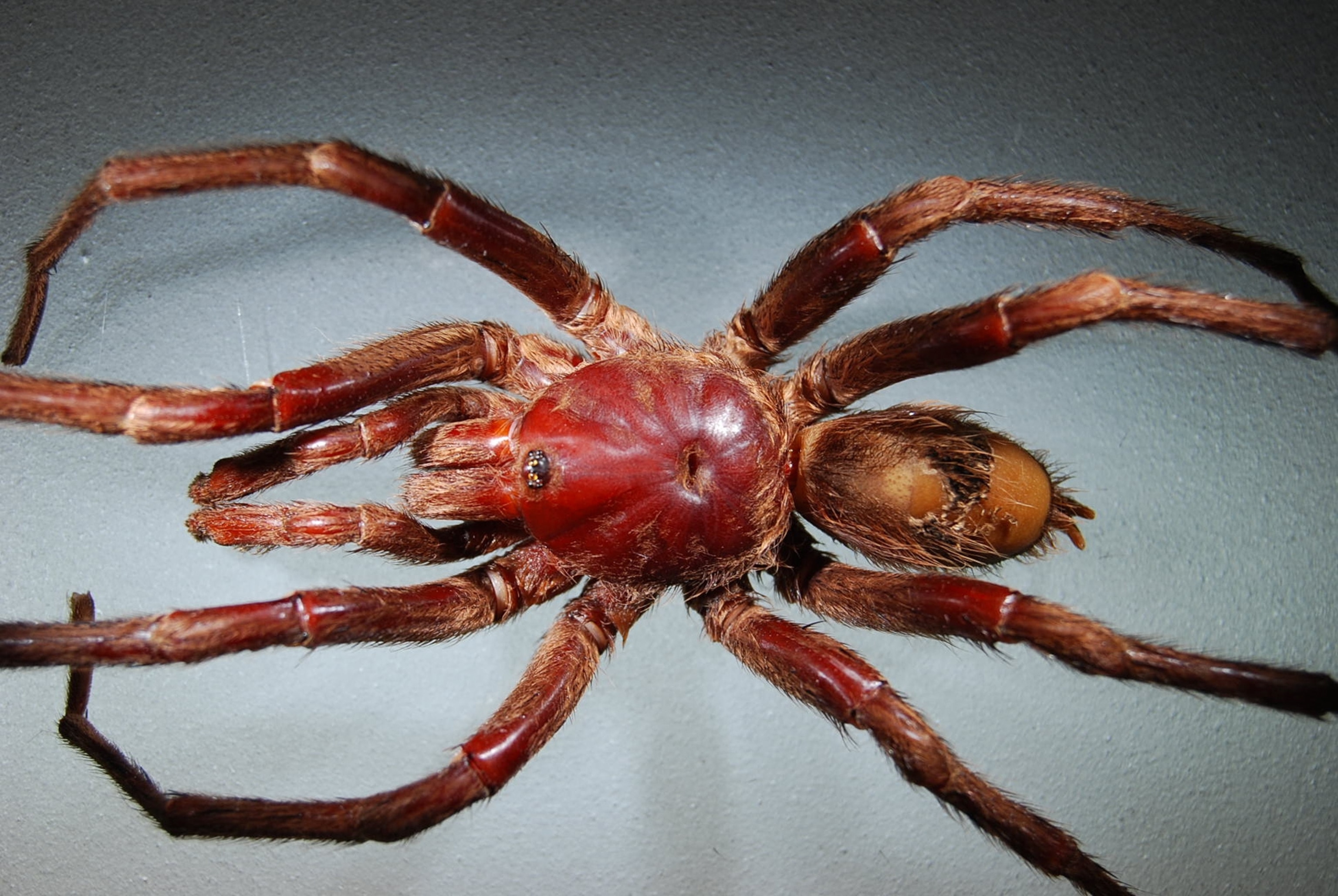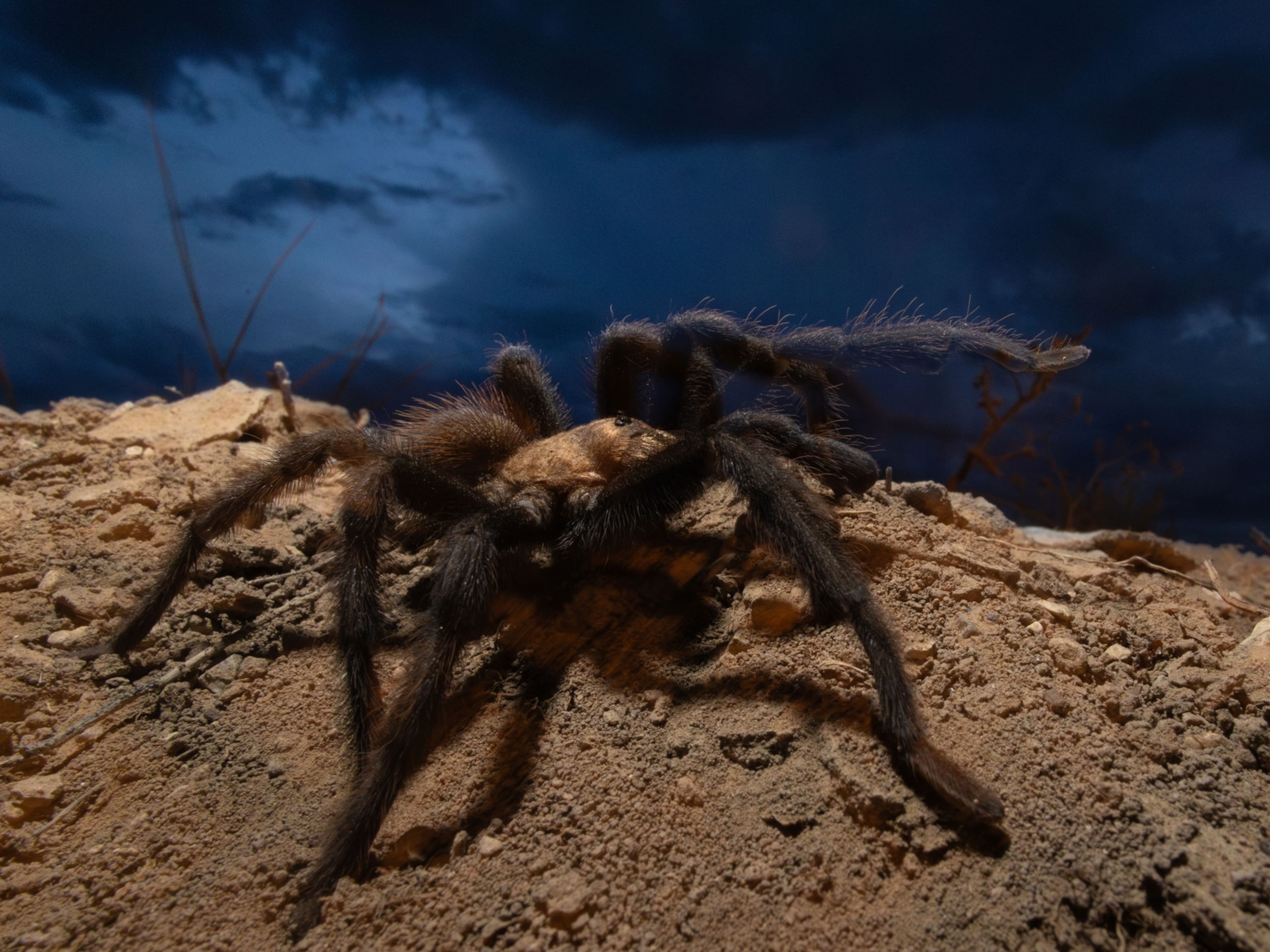
New Tarantula (Not Beetle) Named After John Lennon
Scientists discovered Bumba lennoni living in the Brazilian Amazon.
Imagine a world where a spider is named after John Lennon—because now there is.
Bumba lennoni is a new species of tarantula that lives in the Amazonian state of Pará, Brazil (map), according to a study published October 20 in the journal ZooKeys.
Though not particularly large—its body is about 1.3 inches (34 millimeters) wide—the newfound arachnid belongs to the same family as the dinner-plate-size Theraphosa blondi, the world's largest spider.
Called the goliath birdeater, that spider can reach lengths of a foot (0.3 meter) and weigh six ounces (170 grams). (Related: "Puppy-Size Tarantula Found: Explaining World's Biggest Spider.")
"I have been waiting for a while to dedicate a species to Lennon because I am a fan of the Beatles," study leader Fernando Pérez-Miles, an entomologist at Uruguay's University of the Republic, wrote in an email. "I decided not to wait anymore."
Pérez-Miles and colleagues found B. lennoni in 2005 in a trap at a scientific station in Caxiuana, a national forest whose name roughly translates to "place full of snakes" in the Tupi language.
Specimens of the tarantula were tucked away in Brazil's Museu Paraense Emílio Goeldi, where Pérez-Miles and colleagues recently studied them in detail and discovered that the animal is a new species.
The tarantula is distinct from related tarantulas because of the male's smaller sexual organ and the large number of structures around the mouth called cuspules, tiny nodules that probably help the predators crush their prey, Pérez-Miles noted. (Also see "World's Prettiest Tarantula Takes Best in Show 2014.")





